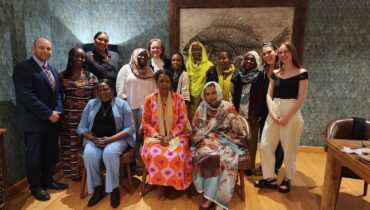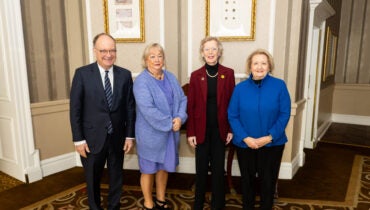By Ambassador Melanne Verveer and David Miliband
Originally posted in the Daily Beast here.
Despite legislation meant to help women and girls in conflict zones, much more must be done to ensure rapid action on the ground—especially in Syria.
For the millions of women and girls displaced by conflicts across the globe, it has been a summer of extreme hardship. As a seemingly unbroken series of crises have unfolded from South Sudan to Mount Sinjar, from Gaza to Syria, women and girls comprise the majority of those displaced. They endure further torment as rates of rape, domestic violence and early marriage skyrocket in times of crisis. As Syrian women and girls confirm in a new report, without a change in approach by the international community, women around the world will have little relief from the ongoing violation of their human rights.
In the past 14 years, the UN Security Council has passed no less than seven resolutions on the role of women in peacebuilding, including 1325, a landmark resolution that asserted that women are uniquely burdened by armed conflict and are critical to resolving it. In 2005, UN agencies and their partners outlined – and agreed upon – key actions (better known to humanitarians as the IASC guidelines), which, if implemented during a humanitarian response, would better protect women and girls from violence.
Most recently, the U.K. and U.S. governments launched an international Call to Action to address violence against women and girls in conflicts and natural disasters. Despite these laudable efforts, as we near 2015 with the highest levels of refugees since World War II, we are witnessing the same cycle of sexual exploitation, rape, early marriage and domestic violence as years past. In South Sudan, women are urinating in plastic bags at home to avoid being raped in camps, and just weeks ago, Yazidi girls were being sold into marriage with known enemies more than twice their age in the communities on Mount Sinjar.
Different countries and different conflicts, yet the same horrendous stories of violence emerge. Our past promises have clearly failed to protect women and girls living in conflict zones. We do not need another resolution or guideline to support women and girls and put an end to this violence – we need to implement the resolutions and standards that already exist.
As world leaders gather at the United Nations in New York this week, they should hear what Syrian women and girls have to say in a new report published by the International Rescue Committee. Are We Listening? Acting on Our Commitments to Women and Girls Affected by the Syrian Conflict starkly demonstrates that the growing gap between words and meaningful on-the-ground action by the humanitarian community is resulting in devastating consequences for Syrian women and girls. In this report, women detail the nature and regularity of the gender-based violence they endure in conflict zones, bringing to life the tragic impacts of the current turmoil and the deficiencies in the international response. They speak of their exhaustion and humiliation from unrelenting negotiations for physical and sexual safety when securing food, water, shelter or clothing. Their struggles include sexual harassment when collecting aid, and domestic violence at home.
How is it that women and girls make up the highest number of refugees and displaced populations, and yet, they are the least visible? Women are routinely excluded from key decisions, which range from family safety to the design of humanitarian aid delivery and post-conflict nation rebuilding; the concerns of women continue to be marginalized. Zameaah, a refugee woman whom the IRC interviewed said, “I want my voice to be heard, so that everyone can feel with us.” These women are the best sources of wisdom on their current challenges and needs. Their voices must be heard.
The voices of Syrian women and girls bring new light to the need for the humanitarian community to double down on its efforts to uphold existing global standards for women’s protection in conflict settings. Women and girls, from Syria to South Sudan, want to eliminate the fear that shapes their day-to-day reality, and they require help to do so. We must live up to our obligations and listen to and protect those most vulnerable to violence. In its report, the IRC lays out eight actionable recommendations, which, if acted upon, will make Syrian women and girls not only safer from exploitation and abuse, but also safer and more empowered to be active in their own lives, homes, and communities.
The first of these recommendations includes an evaluation led by the United Nations to assess the current application of standards to protect women and girls with time-bound actions to immediately address the issues they have identified. Second, we must re-frame domestic violence as an imminent threat to the safety of women and girls and as a barrier to accessing aid, and support programs to respond to and prevent it. Third, we must recognize that adolescent girls face unique barriers and risks, and the humanitarian community must focus on creating opportunities for girls and providing services that respond to their unique experiences of violence, including early and forced marriage.
The women of Syria have spoken. It is imperative that the international community set new, higher standards in accountability to women and girls by its actions in the Syrian region and beyond. With the rallying cries of these women propelling us forward, the time to move from rhetoric to reality is now. We must allow their words to guide our efforts to better protect women and girls across conflict settings around the world.
The question is, are we listening?


